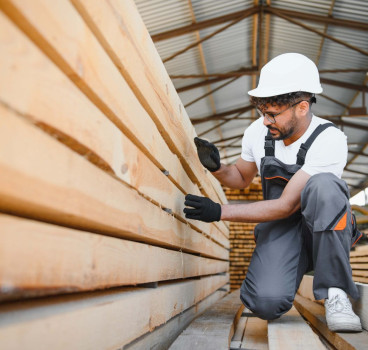The race for the world’s tallest residential building
Driven by a growing number of factors including urbanisation, technological advancement and economic growth, the construction industry is witnessing an unprecedented race to new heights. At the forefront of this vertical expansion are residential skyscrapers, with developers and architects vying to create the world's tallest and most luxurious living spaces, writes John Ridgeway.
The latest contender leading this audacious charge is the coastal Brazilian city of Balneário Camboriú, where plans for the 1,785-foot Triumph Tower have been put forward. If completed, this 100-story behemoth would dethrone New York City's Central Park Tower, currently holding the title of world's tallest residential building at 1,550 feet.
The competition is fierce. In Oklahoma City, Architects Orange's Boardwalk at Bricktown project is eyeing a potential record-breaking height of 1,907 feet, though its final stature hinges on leasing success. Meanwhile, Santiago, Chile's Gran Torre Constanera, designed by Pelli Clarke & Partners, remains South America's tallest residential building at 984 feet.
This escalating race to the sky is driven by the allure of exclusive, sky-high living experiences, coupled with the prestige associated with owning a property in a record-breaking building. It is a potent draw for ultra-high-net-worth individuals. Moreover, as land becomes increasingly scarce in prime urban locations, developers are looking upwards to maximise space and value.
However, constructing such colossal structures presents immense engineering challenges. Wind loads, structural integrity and fire safety are paramount considerations. Architects and engineers are pushing the boundaries of technology to create buildings that are not only tall but also safe and habitable.
Beyond the pursuit of height, these supertall towers offer a glimpse into the future of urban living. They are often designed with cutting-edge amenities, such as private helipads, infinity pools and world-class spas, catering to the demands of their affluent clientele. These buildings also serve as symbols of a city's ambition and economic prowess, attracting global attention and investment.
The rise of supertall towers is intrinsically linked to the concept of vertical urbanism. By concentrating residential, commercial and entertainment spaces within a single structure, these buildings contribute to increased population density and reduced urban sprawl. This can alleviate pressure on infrastructure and transportation systems while preserving green spaces. However, careful planning is essential to ensure that the development of supertall towers does not exacerbate existing urban inequalities or create isolated communities. More about this later.
Environmental considerations
Supertall towers present both challenges and opportunities for environmental sustainability. On the one hand, their energy consumption and material footprint are significant. However, with careful design and the incorporation of green building technologies, these structures can achieve high levels of energy efficiency and reduce their environmental impact. Additionally, by concentrating population density, supertall towers can potentially reduce per capita energy consumption and transportation emissions.
Furthermore, the construction of supertall towers can generate substantial economic activity, creating jobs and boosting local economies. These projects often attract significant investment and can serve as catalysts for broader urban regeneration. However, it is essential to ensure that the benefits of these developments are distributed equitably and that local communities are not displaced or marginalised.
Constructing supertall buildings pushes the boundaries of engineering and architectural expertise. These structures must overcome a myriad of challenges to ensure structural integrity, occupant safety and aesthetic appeal.
For a start, the immense force exerted by wind on supertall buildings requires innovative structural solutions. Advanced computer modelling and wind tunnel testing are crucial for designing structures capable of withstanding extreme weather conditions.
The central core of a supertall building is also critical for structural stability. Engineers must optimise the core's size and material composition to support the building's weight and resist lateral forces.
Equally, the foundation of a supertall tower must be exceptionally strong to withstand the building's immense weight and potential ground movement. Deep foundations, such as pile foundations or caissons, are often required.
Architectural and design considerations
All this means that balancing aesthetics with functionality is a key challenge for architects designing supertall towers. The building's shape and facade must not only be visually striking but also optimise energy efficiency and occupant comfort. Ensuring safe and efficient evacuation in case of emergencies is also paramount. Fire safety systems, emergency exits and refuge floors must be carefully designed and implemented.
In addition, to attract residents and tenants, supertall towers often incorporate extensive amenity spaces, such as gyms, pools, and sky lounges. Designing and integrating these facilities requires careful planning and space allocation.
Iconic supertall towers
As the world's tallest building, the Burj Khalifa exemplifies the engineering and architectural prowess required for supertall structures. Its Y-shaped design and tripartite modular system optimises structural efficiency and wind resistance. The One World Trade Center, New York City, also incorporates advanced technology and resilient design features to withstand extreme loads and provide a safe environment for occupants. Taipei 101, Taiwan, is known for its damper system and showcases innovative engineering solutions for mitigating the effects of earthquakes and typhoons.
By studying these and other supertall towers, engineers and architects can gain valuable insights into the design and construction of future skyscrapers.
As already discussed, the construction of supertall towers is reshaping urban skylines and prompting a reassessment of traditional urban planning principles. These colossal structures offer opportunities for increased density, economic growth and architectural innovation, but they also pose challenges in terms of infrastructure, social equity, and environmental impact.
Supertall towers can significantly influence the character and density of a city. By concentrating population and commercial activity in a relatively small footprint, they can alleviate pressure on infrastructure and reduce urban sprawl. However, careful planning is essential to ensure that these buildings are integrated seamlessly into the existing urban fabric.
A key challenge is providing adequate public transportation and infrastructure to support the increased population density. Without careful consideration, supertall towers can exacerbate traffic congestion and strain public services. Additionally, the concentration of wealth and amenities in these buildings can create social divisions and contribute to gentrification.
The environmental performance of supertall towers is a complex issue. While these buildings offer opportunities for energy efficiency and sustainability through innovative design and technology, their construction and operation also have a significant carbon footprint. The use of large quantities of materials and energy during construction, as well as the ongoing energy consumption for heating, cooling and lighting, are key concerns.
To mitigate these impacts, developers must prioritise sustainable design principles, incorporating renewable energy sources, energy-efficient systems and green building certifications. Additionally, strategies for reducing waste and maximising resource efficiency should also be implemented throughout the building's lifecycle.
Social and Economic Considerations
Supertall towers can have a profound impact on the social dynamics of a city. They can attract affluent residents and businesses, contributing to economic growth and tax revenue. However, it is essential to ensure that the benefits of these developments are shared equitably among the community.
To avoid creating isolated enclaves, it is crucial to integrate supertall towers with the surrounding neighbourhoods through the provision of public amenities, transportation links, and affordable housing options. By carefully considering the social and economic implications of these projects, cities can harness the potential of supertall towers to enhance the overall quality of life for all residents.
In conclusion, the development of supertall towers presents both opportunities and challenges for urban planners, architects, and policymakers. By carefully considering the potential impacts on the environment, society, and the economy, it is possible to create sustainable and equitable developments that contribute to the vitality of cities.
As the competition for the world's tallest residential building intensifies, it is likely that we will witness even more ambitious projects emerging in the coming years. The race to the sky is far from over, and the skyline is set to be redefined.
Additional Blogs

What if Building Control went fully digital?
Building control governs structural integrity, fire protection, energy efficiency, accessibility and countless other aspects of design and construction. Historically, this process has been highly...
Read moreWhere most “Smart Buildings” go wrong
Smart buildings are often presented as the ultimate in modern construction - interconnected, efficient, intuitive and driven by real-time data. They promise lower operating costs, reduced energy use,...
Read more

The future of facilities management starts at RIBA Stage 0
Facilities management has traditionally been treated as a discipline that only becomes relevant once a building is handed over. At that point, FM professionals inherit decisions made months or years...
Read more